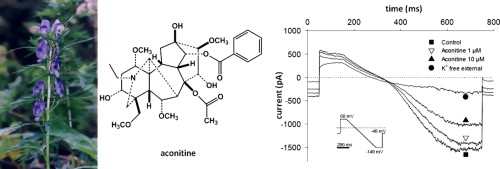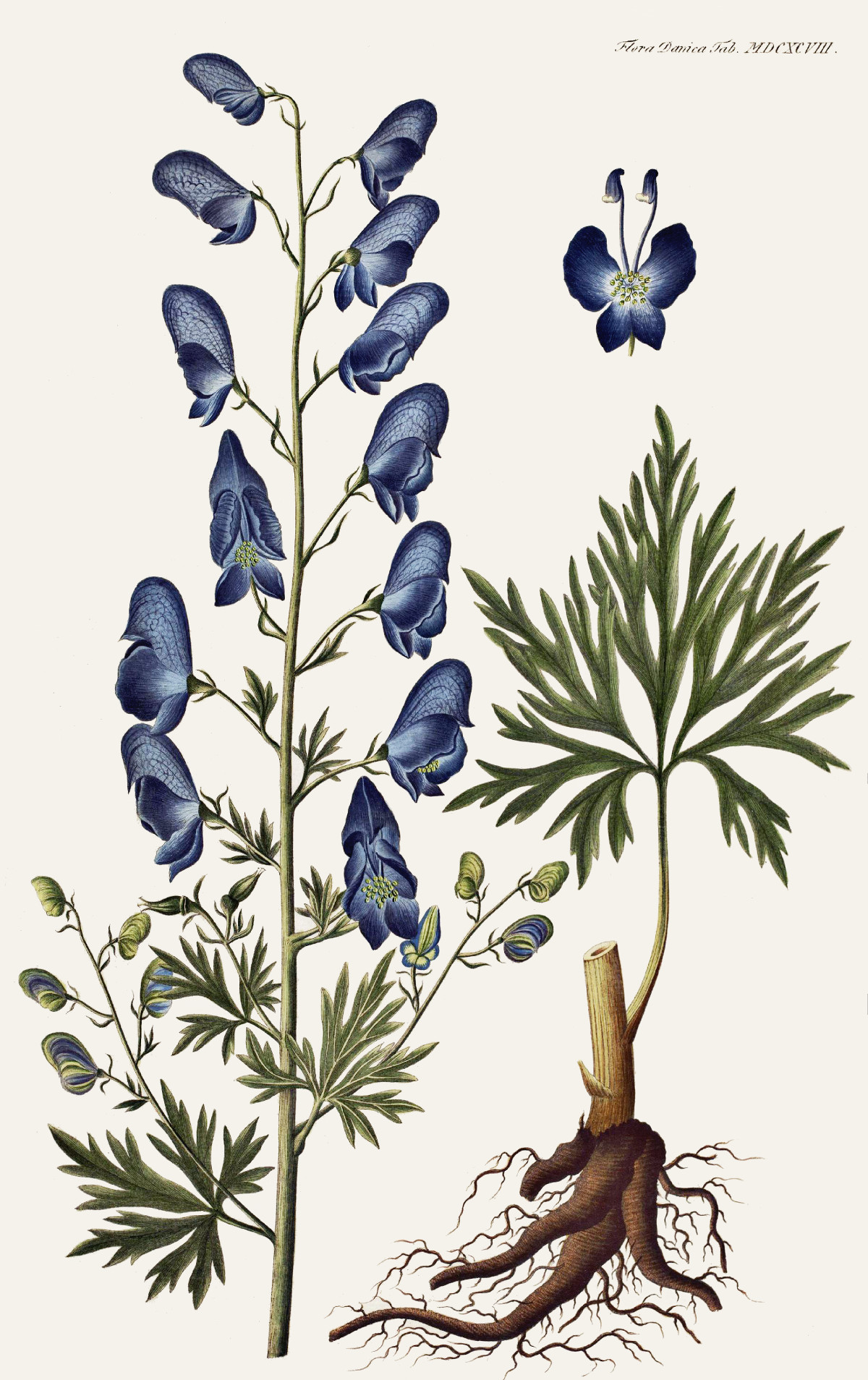Dies ist eine alte Version des Dokuments!
Aconitum napellus L. - Ranunculaceae - monkshood, helmet hlower, soldiers cap, garden wolfsbane, Blauer Eisenhut
Perennial herb, native to central and southern Europe.
Plamt strict and erect, 2-4 ft.; leaves divided to the base, the divisions deeply cleft, usually to below the middle, into numerous linear-oblong segments; flowers mostly blue or violet, in erect close spike-like terminal racemes, in summer or late summer.
„During the ancient Roman period of European history, the plant was often used to eliminate criminals and enemies, and by the end of the period it was banned and anyone growing A. napellus could have been legally sentenced to death“ http://en.wikipedia.org/wiki/Aconitum_napellus
Aconitum napellus tuber Aconitum, Aconite Root, Eisenhutknollen, Tubera Aconiti, Aconiti tuber [CRC, BI, BHP83]
Definition. Aconitum is the dried tuber of Aconitum napellus
Description. Dark brown tubers, 6-8cm long and up to 2cm in diam., occasionally with lateral attached daughter roots. Fracture shows white inner part. Taste slightly sweet, followed by pungency and numbness.
Uses.It was formerly used externally to treat rheumatism, neuralgia, lumbago and contusion; internally as a febrifuge, analgesic and gastric anaesthetic. A anticarcinogenic effect of Aconitum extract or tincture has been claimed. [CRC]
The application of the drug is dangerous. Overdose should be avoided as there is no sure antidote. This is also true in cases of the administration of the main alkaloid itself, aconitine, which has a strong anaesthetic and analgesic effect (achieved by raising the permeability of cell membranes to sodium).
Constituents. The tubers of Aconitum napellus contain up to 1.5% alkaloids with the main alkaloid aconitine, a very strong poison (lethal dosage 4mg). „The main alkaloid, aconitine, can be used in pure form (in 0.1mg granules) to treat facial neuralgia.“ [MPW]
Other components of the drug are organic acids, sugars and starch.
Toxicity. The drug is very toxic due to its aconitine content. With an alkaloidal content of 0.15% (minimal content Ph.Helv.VI), only 0.5g of the drug could be lethal.
„Diterpene alkaloids neoline (1), napelline (2), isotalatizidine (3), karakoline (4), senbusine A (5), senbusine C (6), aconitine (7) and taurenine (8) were identified from Aconitum napellus L. subsp. firmum…“

[Identification of diterpene alkaloids from Aconitum napellus subsp. firmum and GIRK channel activities of some Aconitum alkaloids. Tivadar Kiss, Péter Orvosb, Száva Bánsághi, Peter Forgo, Nikoletta Jedlinszki, László Tálosi, Judit Hohmann, Dezső Csupor. Fitoterapia, Volume 90, October 2013, Pages 85-93]

Aconitum napellus L. as Aconitum neomontanum Wulfen ex Koelle
Flora Danica [G.C. Oeder et al], fasicle 29, t. 1698 (1761-1883)
http://botanicalillustrations.org/species.php?id_species=15012
Aconitum napellus s.str.
© Rolf Marschner (2016),
www.botanische-spaziergaenge.at
